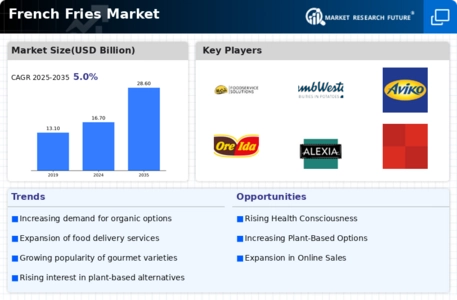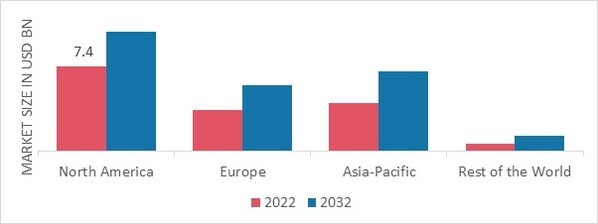Market Analysis
In-depth Analysis of French Fries Market Industry Landscape
The French fries market has witnessed significant trends in recent years, reflecting changing consumer preferences, dietary habits, and global culinary influences. One prominent trend is the growing demand for alternative ingredients and preparation methods. As consumers become more health-conscious, there is an increasing interest in healthier versions of French fries. Sweet potato fries, zucchini fries, and other vegetable-based alternatives are gaining popularity as consumers seek to incorporate more nutritious options into their diets while still enjoying the beloved taste and texture of traditional French fries.
The rise of specialty and gourmet French fries is another noteworthy trend shaping the market. Restaurants and food establishments are elevating the French fries experience by offering unique flavors, seasonings, and dipping sauces. Truffle-infused fries, loaded fries with a variety of toppings, and artisanal sauces have become staples in upscale dining and quick-service establishments alike. This trend aligns with a broader shift in consumer expectations for more diverse and indulgent culinary experiences.
The market is also witnessing an increase in demand for frozen French fries, driven by the convenience factor and the growing popularity of home-cooked meals. With busy lifestyles and the rise of home cooking during the global pandemic, consumers are turning to frozen French fries as a quick and easy side dish. This trend is influencing product innovation in the frozen food sector, with manufacturers introducing a variety of frozen French fry options, including seasoned fries, crinkle-cut fries, and waffle fries.
Health and wellness considerations are playing a crucial role in the French fries market, prompting manufacturers to explore alternative cooking methods and ingredients. Air frying, for example, has gained traction as a healthier cooking option compared to traditional deep frying. This method reduces the amount of oil used in the cooking process, appealing to health-conscious consumers looking to enjoy French fries with fewer calories and less fat. Additionally, the use of innovative cooking oils, such as avocado oil and olive oil, is becoming more prevalent in response to consumer demand for cleaner and more health-conscious food choices.
Global flavor exploration is influencing the French fries market, with an emphasis on ethnic and regional flavors. Consumers are seeking unique and adventurous taste experiences, and food establishments are responding by offering French fries seasoned with a variety of spices, herbs, and global flavor profiles. This trend aligns with the broader movement toward diverse and multicultural culinary influences, catering to a consumer base that values novelty and authenticity in their food choices.
The sustainability trend is making inroads into the French fries market, with a focus on responsible sourcing, packaging, and waste reduction. Consumers are becoming more conscious of the environmental impact of their food choices, prompting food establishments and manufacturers to adopt sustainable practices. This includes sourcing potatoes from environmentally friendly farms, utilizing eco-friendly packaging, and implementing waste reduction strategies throughout the supply chain.
However, challenges persist in the form of fluctuating potato prices, supply chain disruptions, and competition from alternative snacks. The French fries market is heavily dependent on potato crops, and fluctuations in potato prices can impact the overall cost for manufacturers. Supply chain disruptions, as seen during the global pandemic, pose challenges in ensuring a consistent and reliable supply of potatoes. Additionally, the growing popularity of alternative snacks, such as vegetable chips and plant-based options, presents competition for the French fries market, prompting manufacturers to differentiate their products based on taste, quality, and innovation.










Leave a Comment